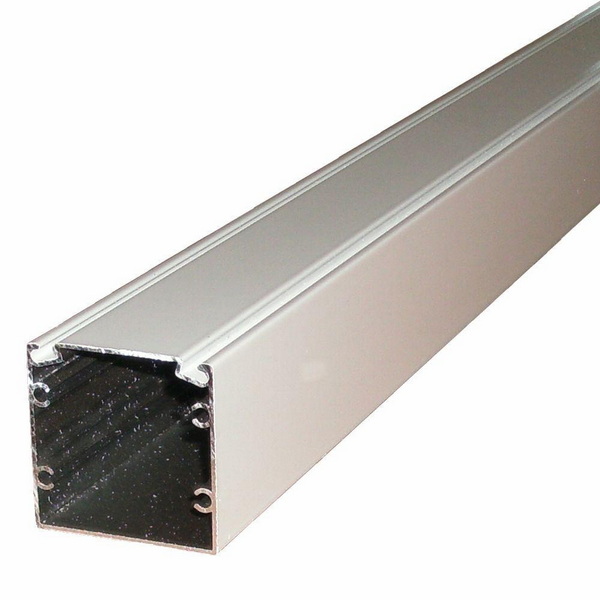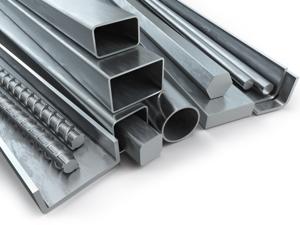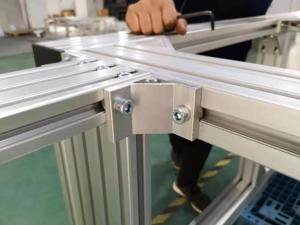Content Menu
● Understanding Aluminum Extrusion Bending
>> Common Bending Methods
● Choosing the Right Aluminum Extrusion Bender
>> Comparison Table of Bending Methods
● Applications of Aluminum Extrusion Benders
● Examples of Applications
>> Construction Application
>> Automotive Parts
● Advantages of Using Aluminum Extrusion Benders
● Innovations in Aluminum Extrusion Bending Technology
>> 1. Computer Numerical Control (CNC) Technology
>> 2. 3D Modeling Software
>> 3. Hybrid Machines
>> 4. Material Advancements
● Maintenance Tips for Aluminum Extrusion Benders
● Conclusion
● FAQ
>> 1. What is an aluminum extrusion bender?
>> 2. What are the common methods of bending aluminum extrusions?
>> 3. How do I choose the right bender for my project?
>> 4. What industries use aluminum extrusion bending?
>> 5. What are the advantages of using aluminum for bending?
Aluminum extrusion bending is a critical process in various industries, allowing manufacturers to create complex shapes and structures from aluminum profiles. Selecting the right aluminum extrusion bender is essential for achieving the desired results in your projects. This article will explore the different types of aluminum extrusion benders, their applications, advantages, and how to choose the best one for your needs.

Understanding Aluminum Extrusion Bending
Aluminum extrusion bending involves deforming aluminum profiles into specific shapes without compromising their structural integrity. This process is widely used in construction, automotive, aerospace, and artistic applications. The versatility of aluminum makes it an ideal material for bending, as it can be shaped into intricate designs while maintaining strength and durability.
Common Bending Methods
There are several methods for bending aluminum extrusions, each with unique characteristics and applications:
1. Roller Bending
This method uses three rollers to bend long aluminum extrusions. It is suitable for creating large-radius bends and is often used in low-to-medium production runs. Roller bending is particularly advantageous for producing long, continuous curves without significant distortion.
2. Rotary Draw Bending
In this technique, the aluminum profile is clamped and pulled around a rotating die. This method allows for precise bends and is ideal for applications requiring multiple bends in close proximity. Rotary draw bending excels in creating tight radius bends while maintaining the material's integrity.
3. Ram or Push Bending
This method involves a ram that forces the extrusion onto a bending die. It is effective for achieving close tolerances and is often used for components like wheelchair frames and medical equipment. Ram bending is known for its speed and efficiency, making it suitable for high-volume production.
4. Compression Bending
Similar to rotary draw bending but less complex, this method wraps the extrusion around a fixed die using a compression die. It is fast and cost-effective but may lead to deformation if not carefully managed. Compression bending is often used in applications where speed is more critical than precision.
5. Stretch Forming
This advanced technique allows for complex shapes by stretching the aluminum while bending it around a die. It produces minimal surface distortion and is suitable for large parts that require intricate designs. Stretch forming is commonly used in the aerospace industry due to its ability to create lightweight yet strong components.
Choosing the Right Aluminum Extrusion Bender
When selecting an aluminum extrusion bender for your project, consider the following factors:
- Project Requirements: Understand the specifications of your project, including the type of bend required (radius, angle, etc.) and the volume of production.
- Material Thickness: Different benders have varying capabilities regarding the thickness of aluminum profiles they can handle.
- Precision Needs: If your project requires high precision, methods like rotary draw bending may be more appropriate.
- Cost Efficiency: Evaluate the cost-effectiveness of each method based on your production volume and budget constraints.
- Production Speed: Some methods allow for faster production times than others; choose one that aligns with your deadlines.
Comparison Table of Bending Methods
| Method | Precision | Production Speed | Cost Efficiency | Best For |
| Roller Bending | Medium | Medium | Low | Large-radius bends |
| Rotary Draw Bending | High | Medium | Medium | Complex shapes |
| Ram or Push Bending | High | Low | High | Medical equipment |
| Compression Bending | Medium | High | High | High-volume production |
| Stretch Forming | Very High | Low | Medium | Unique shapes |
Applications of Aluminum Extrusion Benders
Aluminum extrusion benders are utilized across various industries:
- Construction: Used for door frames, window frames, curtain walls, and structural supports. The lightweight nature of aluminum makes it ideal for reducing overall building weight while maintaining strength.
- Automotive: Employed in manufacturing parts like chassis components and brackets. The automotive industry benefits from aluminum's strength-to-weight ratio, improving fuel efficiency without sacrificing safety.
- Aerospace: Utilized for lightweight structural components that require high strength-to-weight ratios. Aerospace applications often demand materials that can withstand extreme conditions while remaining lightweight.
- Artistic Projects: Artists use aluminum bending to create sculptures and installations due to its versatility. The ability to produce intricate designs allows artists to explore new creative avenues.

Examples of Applications
Construction Application
*Aluminum extrusions in construction*
Automotive Parts
*Bended aluminum parts in automotive industry*
Advantages of Using Aluminum Extrusion Benders
The benefits of using aluminum extrusion benders include:
- Versatility: Capable of producing a wide range of shapes and sizes to meet diverse project requirements.
- Durability: Aluminum's resistance to corrosion ensures longevity in various applications, reducing maintenance costs over time.
- Cost-effectiveness: Efficient production methods reduce waste and lower costs associated with raw materials.
- Lightweight: Aluminum's lightweight nature makes it ideal for applications where weight reduction is crucial, such as in aerospace and automotive industries.
- Recyclability: Aluminum is 100% recyclable without loss of quality, making it an environmentally friendly choice for many projects.
Innovations in Aluminum Extrusion Bending Technology
Recent advancements in technology have significantly improved the efficiency and capabilities of aluminum extrusion benders:
1. Computer Numerical Control (CNC) Technology
CNC machines allow for precise control over the bending process, enabling manufacturers to produce complex shapes with high accuracy. This technology reduces human error and increases repeatability in production runs.
2. 3D Modeling Software
The integration of 3D modeling software helps engineers design intricate components before production begins. This software can simulate the bending process to predict potential issues, allowing adjustments before any physical work starts.
3. Hybrid Machines
Some modern benders combine multiple bending methods into one machine, providing flexibility and efficiency in production lines. Hybrid machines can switch between techniques depending on project requirements.
4. Material Advancements
The development of new aluminum alloys has enhanced the performance characteristics of extruded parts. These advancements allow manufacturers to create lighter yet stronger components suited for demanding applications.
Maintenance Tips for Aluminum Extrusion Benders
To ensure optimal performance from your aluminum extrusion bender, regular maintenance is essential:
1. Daily Inspections: Check all moving parts for wear or damage before starting operations.
2. Lubrication: Regularly lubricate moving parts according to manufacturer guidelines to reduce friction and prevent breakdowns.
3. Calibration: Periodically calibrate machines to maintain precision in bends.
4. Cleaning: Keep machines clean from debris or leftover materials that could affect performance.
5. Training Operators: Ensure that all operators are trained on proper handling techniques to minimize errors during operation.
Conclusion
Selecting the best aluminum extrusion bender depends on your specific project requirements, including precision, production speed, and cost efficiency. Understanding the different bending methods available will help you make an informed decision that aligns with your project's goals. Whether you need simple bends or complex shapes, there is an aluminum extrusion bender suited to your needs.
By considering advancements in technology and maintenance practices, you can maximize the lifespan and efficiency of your equipment while producing high-quality products that meet industry standards.

FAQ
1. What is an aluminum extrusion bender?
An aluminum extrusion bender is a machine used to bend aluminum profiles into specific shapes without compromising their structural integrity.
2. What are the common methods of bending aluminum extrusions?
Common methods include roller bending, rotary draw bending, ram or push bending, compression bending, and stretch forming.
3. How do I choose the right bender for my project?
Consider factors such as project requirements, material thickness, precision needs, cost efficiency, and production speed when selecting a bender.
4. What industries use aluminum extrusion bending?
Industries such as construction, automotive, aerospace, and art utilize aluminum extrusion bending for various applications.
5. What are the advantages of using aluminum for bending?
Aluminum offers versatility, durability, cost-effectiveness, lightweight properties that make it ideal for many applications.






















